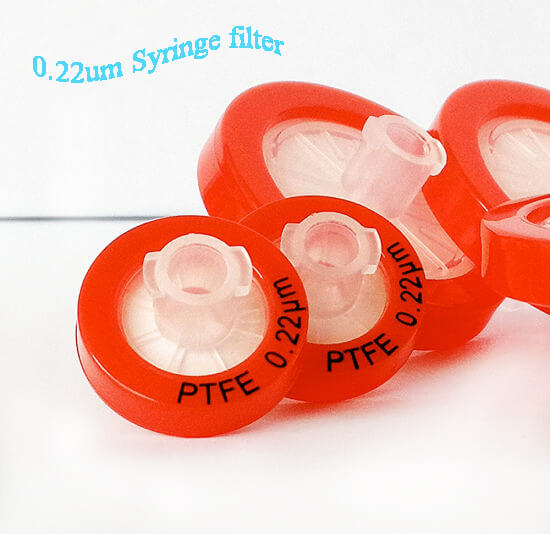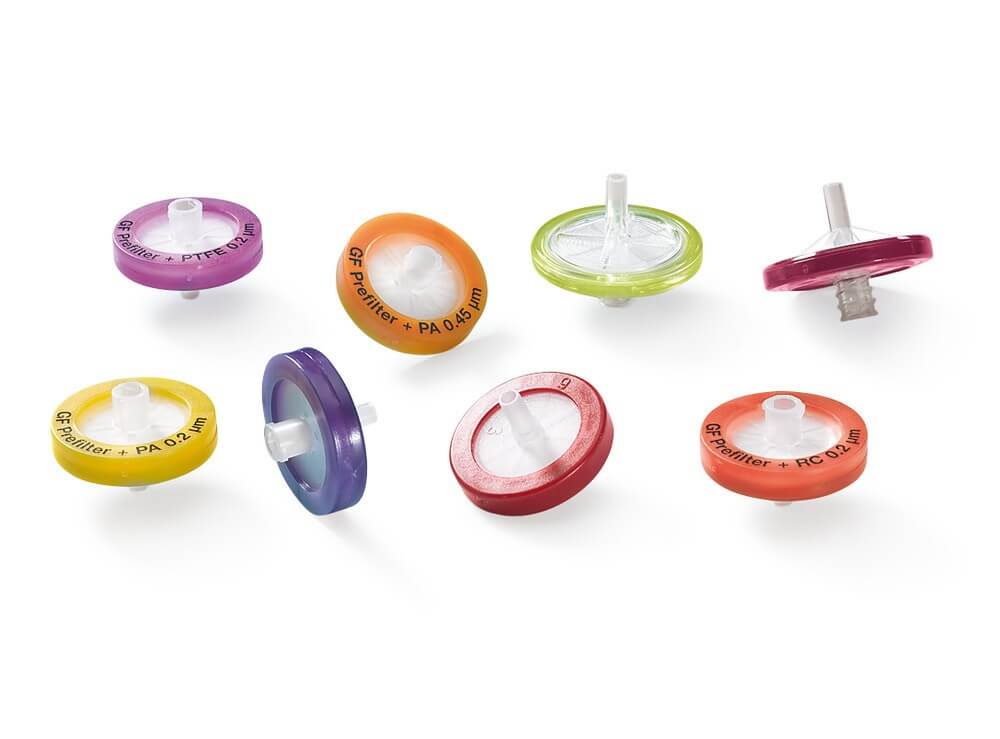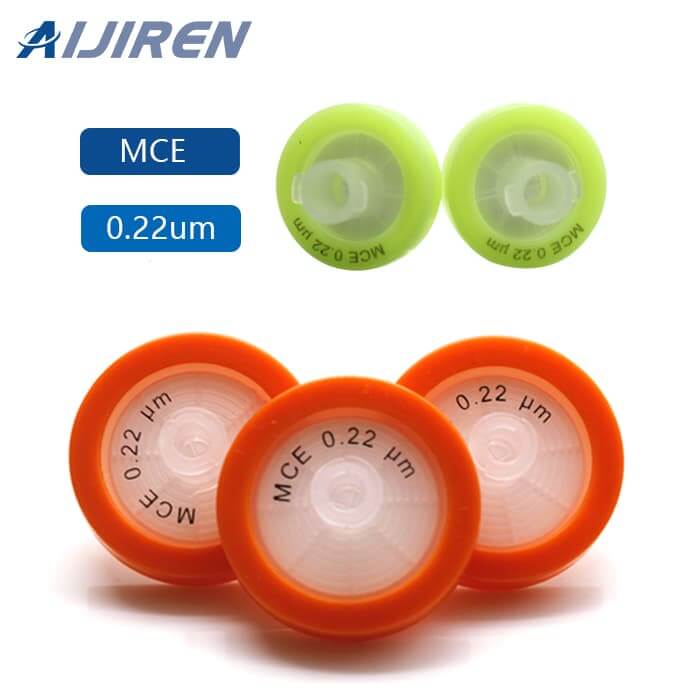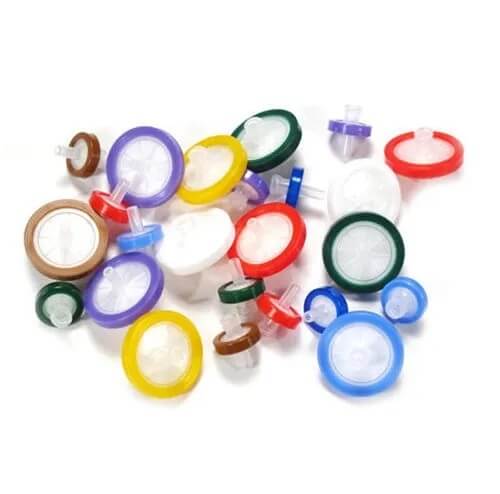What is the Difference Between 0.2 and 0.22-Micron Filters?
If you were to spend a little time perusing Aijiren’s selection of membrane syringe filters, one thing we’re very proud of might just jump out at you: we have a lot of pore sizes. So many that you might wonder if it’s a little excessive that we carry both 0.2 and 0.22-micron pore sizes. After all, both are used to sterilize fluid passed through them. Can the tiny difference of 0.02 microns really change a filter’s performance characteristics that much?

Originally, sterilizing filters were designated as 0.45- micron in pore dimension, presumably on the basis of mercury intrusion measurements. The devising of the 0.2-micron rating arose from the halving of the 0.45-micron pore size, which was necessitated by a 1967 study by Bowman et al. relative to Pseudomonas diminuta (Brevundimonas diminuta) retention wherein that organism penetrated the “0.45 sterilizing filter”. The 0.45 number was reduced by half, to 0.22, to yield sterile effluent.
However, under proper filtration conditions, 0.45-micron-rated membranes can sustain the required B. diminuta challenge to yield sterile effluent. Viscous media may be filtered advantageously using this more generously proportioned pore size.

To answer that question, we must first take a look at one of the methods used to test a filter’s performance: the bubble point test1. Standard tests to verify a filter’s stated pore size usually entail a bubble point test. This test pushes air under pressure through a submerged membrane (either in water or alcohol) to the point where air bubbles first begin to come through the filter membrane2. The largest pore, or pores, in the membrane, will bubble first, and the air pressure required to push the bubbles through these pores can be mathematically correlated to pore size. The irregular and tangled nature of the pores of most membrane filters makes it impossible to directly measure the size of an individual pore, so the bubble point test is used to determine the smallest particle that the filter can sieve out of fluid.
In other words, the stated pore size of the filter isn’t literally the size of the pores. It’s a rating of what can’t pass through them. Obviously, when sterilizing solutions, the object is to physically remove bacteria suspended in the solution. Before 0.2 and 0.22-micron filters became standard, it was thought that filters with an absolute rating of 0.45- micron were thought to be sufficient to strain out even the smallest bacteria. However, the discovery of Brevundimonas diminuta, showed that there were still bacteria capable of passing through a 0.45-micron filter in large quantities. After the discovery, researchers and labs competed to create the new filtration standard, arbitrarily defining their filters to be either 0.2 or 0.22 micron in pore size, roughly half the size of the old standard.

What that means is, for the purpose of sterilization, 0.2 micron and 0.22-micron filters are indistinguishable. Their performance is the same, only the difference being the designation of their pore size rating. The real measure of a filter’s ability to sterilize fluid is passing the test described in ASTM F838-05, Standard Test Method for Determining Bacterial Retention of Membrane Filters Utilized for Liquid Filtration. Basically, if the filter can retain a minimum of 1 x 107 colony forming units (CFU) per cm2 of a challenge bacteria (usually B.diminuta5), then the filter is suitable to use for sterilization.

Even with the contraction of the standard pore size for sterilization, it turns out that simple size selection is not a sufficient method to fully contain all particles. Jornitz6 et al. showed adsorptive effects also change the manner in which different filter media capture different particles. Influences such as pH, pressure, bacterial load, and the liquid medium themselves influence the size of bacteria. However, as long as the filters could capture the required number of challenge bacteria per square centimeter of the membrane, then it is a valid sterilizing filter – whatever the stated pore size. Sterlitech Corporation is both a manufacturer and a reseller of different membrane filters, so you will see 0.2 microns and 0.22 microns in our filter offerings; but for sterile filtering, both are suitable based on the above information.
Back to List
-
 下午4:09Weighing the Pros and Cons of PTFE/Silicone Septa
下午4:09Weighing the Pros and Cons of PTFE/Silicone Septa -
 下午4:05Decoding Vial Discard Guidelines: Ensuring Precision in Chromatography
下午4:05Decoding Vial Discard Guidelines: Ensuring Precision in Chromatography -
 下午5:01Navigating Micro Inserts for HPLC Vials: A Comprehensive Guide
下午5:01Navigating Micro Inserts for HPLC Vials: A Comprehensive Guide -
.jpg) 下午2:02Common faults and solutions of automatic samplers(2)
下午2:02Common faults and solutions of automatic samplers(2) -
 下午5:08Ensuring Sample Integrity: Navigating EPA Storage Vials Stability Guidelines
下午5:08Ensuring Sample Integrity: Navigating EPA Storage Vials Stability Guidelines

